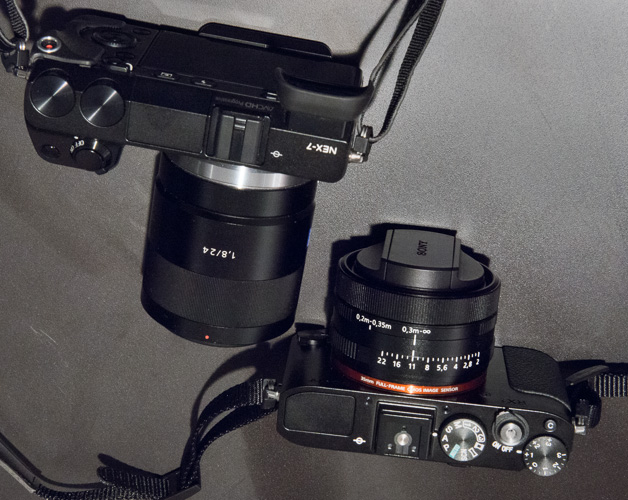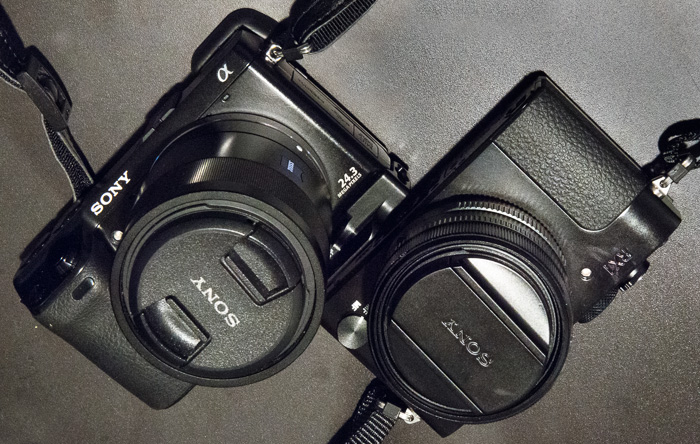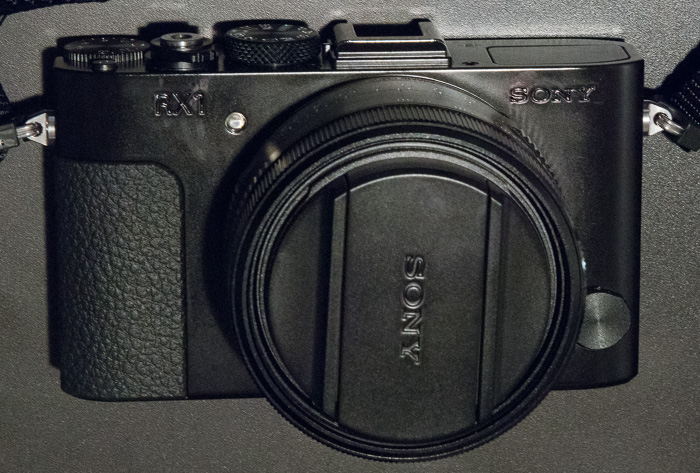It was the best of times, it was the worst of times, it was the spring of digital, it was the autumn of film, it was the end of toxic chemicals, it was the beginning of poisonous third-world recycling, it was the age of a cornucopia of new devices and processes, it was the age of cherished old materials being withdrawn from the market, it was the epoch of incredible new artistic capabilities, it was the epoch of viewers who believed that nothing was real in a photograph, it was the season of dramatic reductions in the cost of consumables, it was the season of increasingly pricy equipment, we had every artistic possibility before us, we had nothing but ephemeral, shallow dreck before us, we were all going direct to photographic Heaven, we were all going direct the other way.
Into this conflicted world comes a thoroughly conflicted camera, the Sony RX-1.
- Is it an overpriced point-and-shoot or a bargain: a Leica-class lens at better than Leica pricing with a camera body thrown in for nothing?
- It comes with a lens cap that’s a work of industrial design art, but many important accessories are optional and priced by the same people who price the Leica accessories and the options on Porsches.
- There is no articulation on the LCD panel, even though adding it would add about the weight of the fancy lens cap. (I recommend displaying the lens cap in a case on your mantle and replacing it with a plastic 49mm cap at less than half the weight.)
- The designers could find room for a pop-up flash, but not for a built-in electronic viewfinder. (I’d prefer a smaller LCD on the back, dropping the flash, and putting an EVF where it is on the NEX-7)
- The shutter is virtually silent but the autofocus is pretty loud, especially when you turn the camera on.
- The camera is small and has the potential to be inconspicuous, but it has large bright white lettering on the front, and a coppery ring around the base of the lens. (The version in the pictures has the “stealth” option, available on special order from Sony for an additional $675.)
- The main controls are well-placed and have nice crisp detents, making it unlikely that you’ll change anything by accident, but the battery and memory card can’t be changed while the camera is on a tripod.
- The lens and full-frame sensor (maybe the same sensor as is in the D600) can produce amazing images, but the raw files have a wonky ten-and-a-half-bit tone-curve compression that you can’t turn off, although they appear to have been digitized with a 14-bit ADC.
- The camera is a serious tool at a serious price, but the (no CD in the box, download only) software is aimed at the neophyte. Fortunately, Lightroom will read the raw files, so you don’t need to use the Sony software.
It seems natural to me to compare the RX-1 to the NEX-7 and the Zeiss 24mm f/1.8. Same angle of view, similar size, costs not that far apart:
- NEX-7: $1100, Zeiss 24/1.8. $1100 Total: $2200
- RX-1: $2800, Finder: $500. Total: $3300; higher if you add some other accessories.
Top view, showing the 24mm lens size compared to the 35
Front view
RX-1 with stealth option
RX-1 advantages: Size (but not a clear win with EVF attached), weight (a bit), low-light performance, dynamic range, low acoustic noise, user interface. The last is my subjective opinion, based on the stiffer detents, better button and switch assignability, split menus a la M9, aperture control where God intended it, better placement of video button (although the NEX-7’s problems in that area can be cured with an aftermarket part which you can see installed in the top picture).
NEX-7 advantages: Price, lens interchangeability, built-in EVF.
How about image quality? I’ve read a lot on the web, and there doesn’t seem to be universal agreement. You know me; I had to run my own tests. Stay tuned.



Leave a Reply